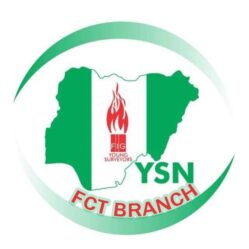1.0 Introduction
Spatial hydrography, a subset of hydrography, involves studying and mapping water bodies, focusing on their spatial relationships and interactions with the surrounding environment. This field combines geography, hydrology, and geospatial technologies to understand and manage water resources effectively. The study of the spatial distribution and relationships of water bodies Understanding hydrological processes, managing water resources
2.0 What is Spatial Hydrography?
Spatial hydrography integrates geographic information systems (GIS), Remote Sensing, and hydrological modeling to analyze and visualize water bodies’ spatial distribution, morphology, and dynamics. It examines:
1. Water body geometry and topology.
2. Hydrological processes (e.g., flow, storage, and quality).
3. Watershed dynamics and catchment characteristics.
4. River network analysis and floodplain mapping.
3.0 Data Sources for Spatial Hydrography
3.1 Government Agencies
United States Geological Survey (USGS) – Hydrography datasets
National Oceanic and Atmospheric Administration (NOAA) – Coastal and marine data
Environmental Protection Agency (EPA) – Water quality and hydrology data
National Hydrography Dataset (NHD) – Stream and river data
US Army Corps of Engineers (USACE) – Hydrologic and hydraulic data
3.2 International Organizations
Food and Agriculture Organization (FAO) – Global hydrography datasets
United Nations Environment Programme (UNEP) – Global water quality data
World Meteorological Organization (WMO) – Hydrological data and forecasts
European Union’s Copernicus Programme – Hydrological and environmental data
Global Runoff Data Center (GRDC) – River discharge data
3.3 Remote Sensing Data
Landsat Imagery (USGS)
Sentinel-2 Imagery (ESA)
MODIS Imagery (NASA)
Radar Imagery (ESA, NASA)
High-Resolution Imagery (Digital Globe, Planet Labs)
3.4 Open-Source Data
OpenStreetMap (OSM) – Hydrography data
GeoNames – Hydrographic feature data
HydroSHEDS – Global hydrography datasets
GADM – Global administrative boundaries
Wikimedia Commons – Hydrography data
Commercial Data Providers
ESRI – Hydrography data and software
DigitalGlobe – High-resolution imagery
Planet Labs – Satellite imagery
Airbus Defence and Space – Satellite imagery
HERE Technologies – Hydrography data
3.5 Field Measurements
Stream gauges (USGS)
Water level sensors (NOAA)
Rainfall gauges (NWS)
Water quality sensors (EPA)
Citizen-reported data (Crowdsourcing)
4.0 Applications of Spatial Hydrography
Water Resource Management: Optimizing water supply, irrigation, and drainage systems.
Flood Risk Assessment: Identifying flood-prone areas and developing mitigation strategies.
Environmental Monitoring: Tracking water quality, sediment transport, and aquatic habitats.
Hydroelectric Power Generation: Siting and optimizing dam locations.
Navigation and Transportation: Charting safe waterways and optimizing shipping routes.
Climate Change Adaptation: Modeling impacts on water resources and ecosystems.
Ecosystem Restoration: Restoring wetlands, rivers, and aquatic habitats.
5.0 Conclusion
Spatial hydrography plays a vital role in understanding and managing water resources. By leveraging geospatial technologies and hydrological modeling, professionals can make informed decisions, ensuring sustainable water management and mitigating water-related risks.
Feel free to share your thoughts and experiences with us! at
ysnfctabuja@gmail.com
Written By: Surv. KAREEM T. Risqot, MNIS
Member: Education Committee YSN-FCT


